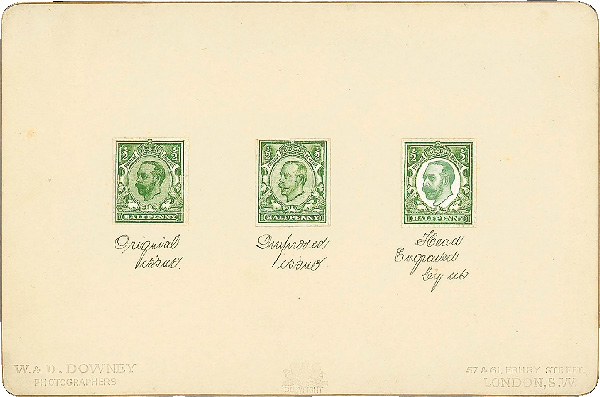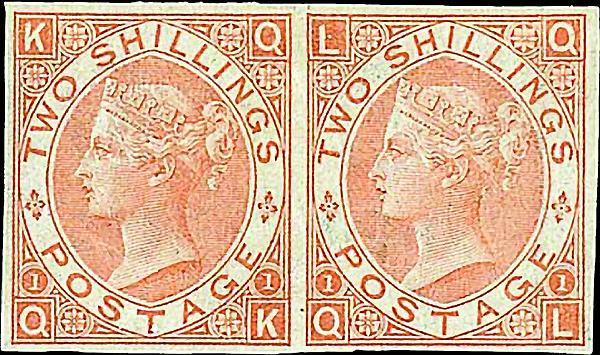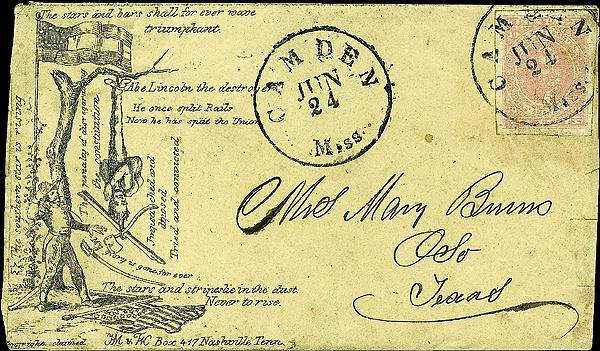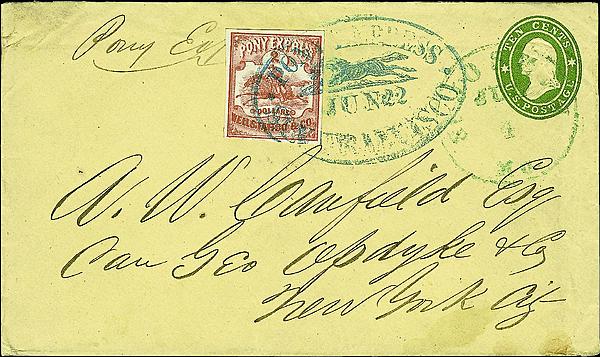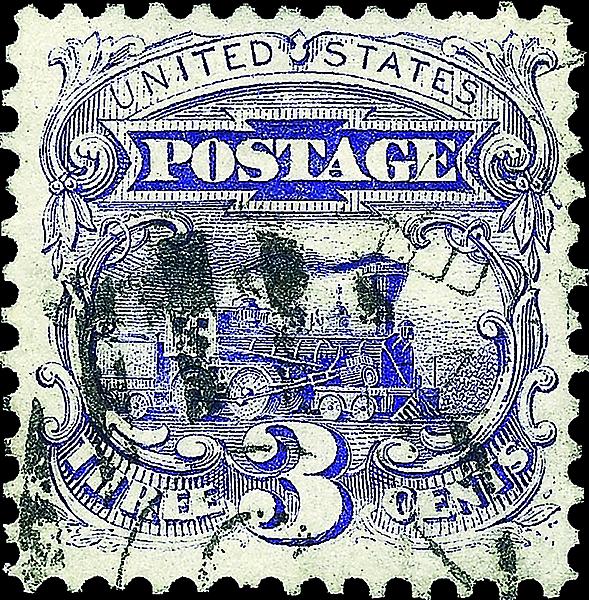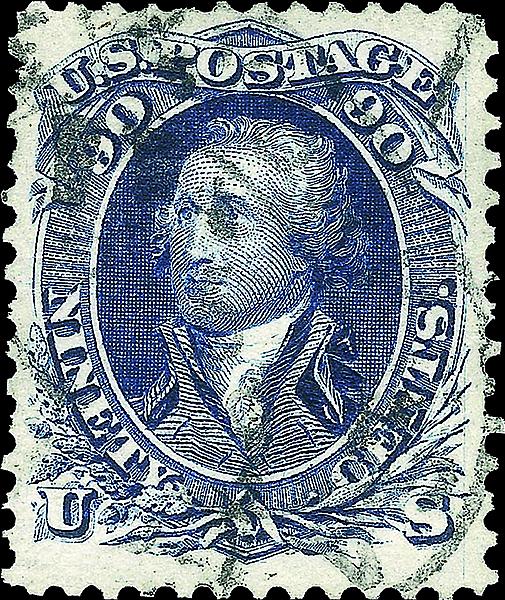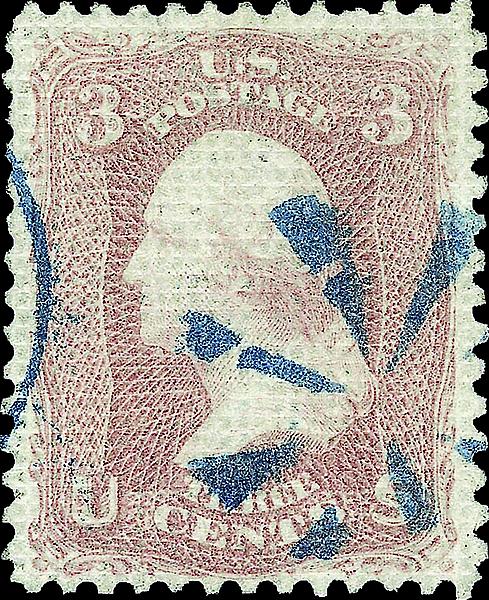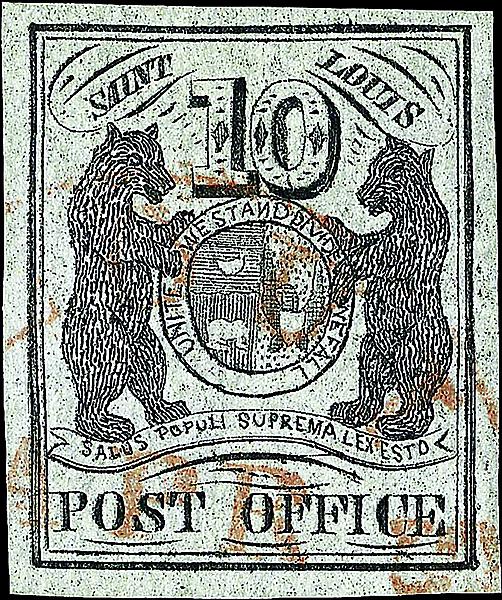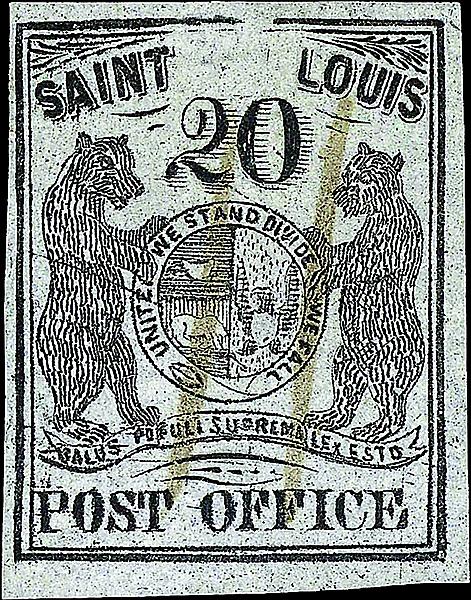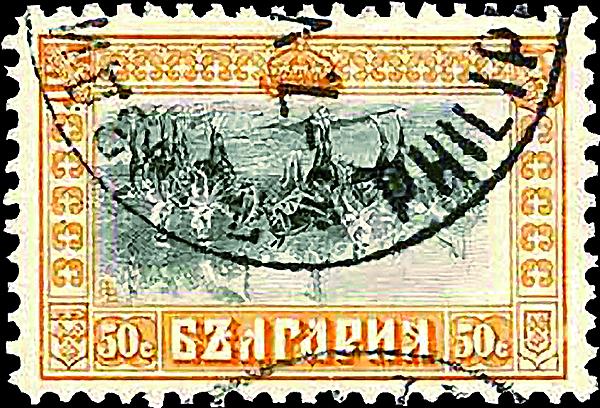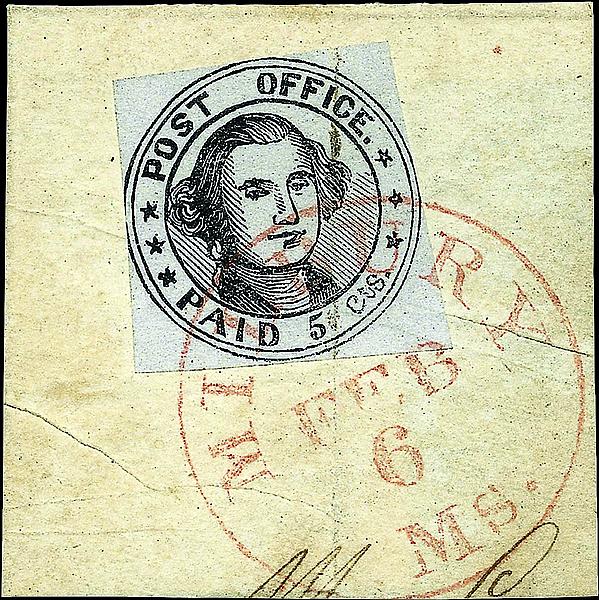Auctions
Year ends with strong sales of classic material
As 2013 came to an end, there was ample evidence of vigor in some sectors of the stamp market. Extending the sales trend of recent years, top-notch, attractive items with an interesting story to tell continued to do well, while more routine items remained weaker.
“Bright spots? In U.S. I see great demand for graded stamps, world-class rarities, essays and proofs, fancy cancellations and high-quality, visually appealing covers,” said Scott Trepel, president of Robert A. Siegel Auction Galleries, in late December.
“In non-U.S., anything Asian, high-quality singles, major rarities and well-filled collections offered intact” are selling well, he added.
On Dec. 17-18, Trepel’s firm offered the Golden Oak collection of superb United States stamps.
Put together over many years by an anonymous collector with an eye for what the legendary stamp dealer and author Stanley B. Ashbrook (1882–1958) termed philately’s “four Cs” (color, clarity of impression, centering and cancellation), many of the stamps in the Golden Oak sale stood out as the finest known examples of their kind, and brought prices to match.
The 1846 Millbury, Mass., 5¢ postmaster’s provisional (Scott 7X1) has a quaint woodcut design showing George Washington. A pretty example (Figure 1) affixed to piece and canceled with a clean “Milbury [sic], Ms. Feb. 6” postmark in red, one of just 18 known, went for $43,125 (all Siegel results include 15 percent buyer’s premium).
The St. Louis, Mo., postmaster issued provisional stamps in 1845-46 showing a pair of bears holding up the city arms, in three denominations on various papers. Several attractive examples were in the Siegel sale.
A 20¢ on gray lilac (Scott 11X6, Figure 2 left) with a light pen cancel, described as “easily one of the finest” of just four or five sound, four-margined examples surviving, sold for $97,750.
St. Louis Bears are typically found pen canceled, which is how the Scott Specialized Catalogue of United States Stamps and Covers values them. Stamps with postmarks often sell for more.
A superb 10¢ on gray lilac paper (Scott 11X5, Figure 2 right), canceled only by a red St. Louis date stamp and described as “the finest example in existence,” brought $63,250, several times its catalog value.
Among U.S. stamps in the Siegel sale, a 3¢ rose stamp of the 1861-66 issue, with an all-over A grill impressed in the paper to prevent reuse (Scott 79), reached an extremely strong price.
The A grill stamps are of notoriously poor quality, usually found with pulled or torn perforations as a result of the grill weakening the paper.
Indeed, the Scott U.S. specialized catalog value of $1,500 for Scott 79 is for an example with perforation faults.
The example in the Golden Oak sale, described as “without question the finest used example...a phenomenal stamp in every respect,” had all perforations intact and excelled in all of Ashbrook’s four Cs. Pictured in Figure 3, it sold for $54,625.
An attractive, if slightly faulty, used example of the 1875 reissue of the 90¢ Washington stamp of 1861 (Scott 111, Figure 4 left) sold for $66,125.
Although 10,000 copies were printed for the Centennial Exposition in Philadelphia in 1876, only a few hundred sold, and just a handful were used on mail. The rest were destroyed.
Reissues are distinguished from the original stamps by their crisp impressions on hard, white paper.
A reissue of the 3¢ Locomotive from the 1869 pictorial series (Scott 125, Figure 4 right), with just four or five known in sound, used condition, sold for $63,250. Another 10 or 11 exist used, but have faults.
On the downside of the market this year, Siegel’s Trepel said that he saw weakness in “standard U.S. rarities in very fine or better condition,” citing specifically the 1851 1¢ type I (Scott 5), the Bank Note Special Printings, the 1917 5¢ carmine imperforate error of color (Scott 485) and the 1923 2¢ Harding rotary press printing, perforated 11 (Scott 613), all of which drew less-than-stellar realizations in the Golden Oak and other recent sales.
“This would change dramatically with an increase in demand, because the stamps are so rare,” he concluded.
A Siegel sale of American postal history on Dec. 19-20 included a full sheet of 42 of the 3¢ stamp issued by Greig’s City Despatch Post in New York in 1842 (Scott 40L1).
This stamp was the first adhesive postage stamp of any kind issued in the Western Hemisphere, five years before the first U.S. post office issue.
One of five known sheets, the example in the Siegel sale has resided in many famous-name collections of the past.
As a philatelic item, it is of special interest because the same plate that printed it was later modified and reused for further issues over a period of several years, including a 2¢ stamp and then a stamp bearing the initials “CC” for the courier’s subsequent owner, Charles Cole. The sheet sold for $37,375.
A cover carried by Pony Express from San Francisco to St. Joseph, Mo., in the summer of 1861, during the second phase of service, bearing the short-lived $2 red Wells Fargo Pony Express stamp (Scott 143L1, Figure 5) affixed to a 10¢ stamped envelope, sold for $48,875.
An 1862 Confederate cover (Figure 6) with an infamous patriotic political cartoon depicting Abraham Lincoln hanging upside down from a tree limb, one of just a dozen known, was offered at auction for the first time since its discovery.
One of just two bearing a 10¢ rose stamp (Confederate States Scott 5), the cover was postmarked in Camden, Miss., and sent to Oso, Tex. It brought $54,625.
In London, Spink held a year-end sale of British stamps and postal history on Dec. 12. The top seller was a well-known cover (Figure 7) sent from Madeira franked with a 2-penny Queen Victoria (Scott 2), canceled by a boxed “Deal Ship Letter” postmark.
This scarce marking, from the port town of Deal just north of Dover on the Kent coast, was meant to be applied as an endorsement, not a canceler; its use to obliterate a “Twopenny Blue” is unique. It sold for the equivalent of $31,300 (all Spink lots include 20 percent buyer’s premium).
The 2-shilling pale brown stamp of 1880 (Scott 56) is one of the scarcest British regular issues, existing in smaller quantities than even the famous £5 orange stamp of 1882. The imperforate version (56a) is scarcer still.
An unused pair with original gum, one of just three in private hands, brought $37,200 (Figure 8).
The first definitive stamps of King George V, issued in 1911, were based on a three-quarter profile photograph by the firm of W.&D. Downey. The design represented a departure from tradition not only because it was based on a photograph instead of a sculpture, but also because the king was not shown in classic profile.
The designs were roundly mocked by the public and even design experts acknowledged their inferiority.
A card from Downey (Figure 9), illustrating the photographers’ valiant attempt to salvage their design, bears three versions of the ½p stamp: the unpopular original design, the reissued version correcting the worst design weaknesses, and a third paste-up essay annotated “Engraved by us,” with a new, more sculptural-looking head.
The card, which is mentioned in the Stanley Gibbons Specialized Stamp Catalogue, was to no avail; a new design with a bas-relief coinage-type profile replaced the “Downey Head” within a short period. The card sold for $9,400.
Britain briefly produced overprints on its definitive stamps for several government offices, but stopped when it came to light that some civil servants were reselling the stamps to philatelists for personal profit.
An unused example of the 10p King Edward VII “O.W. [Office of Works] Official” overprint (Scott O53), with large part original gum, fetched $29,400, while a 5p Edward VII “Board of Education” overprint (O70) in similar condition went for $23,500.
In Orange County, Calif., H.R. Harmer held a sale on Nov. 14-16 of U.S. and worldwide stamps and postal history that featured some rare Hawaiian covers from the late 19th century.
An envelope with a Wells, Fargo & Co’s. Express Hawaiian frank imprint and an 1882 5¢ ultramarine King Kamehameha IV stamp (Hawaii Scott 39), canceled by a Hawaiian forwarder’s purple oval date stamp, sold for $17,110 (all Harmer’s results include 18 percent buyer’s premium).
Among the foreign stamps in the Harmer sale was a Bulgarian inverted-center error of the 50-stotinki Tsar and Princes stamp from the 1911 pictorial issue (Scott 97a, Figure 10).
Compared to the prices that U.S. errors like the famous Inverted Jenny airmail can bring, the prices paid for comparably scarce inverts from less popularly collected countries offer a bit of a reality check.
The Bulgarian error, whose black vignette of a group of men on horseback is upside-down in relation to its ornate ocher-colored frame, exists in only about 30 examples, all used with postmarks from the same town, Philippopolis (Plovdiv).
The fresh and well-centered example in the Harmer’s sale sold for $6,785, more than double its value in the Scott Classic Specialized Catalog of Stamps and Covers 1840-1940, though still far less than an Inverted Jenny.
MORE RELATED ARTICLES
Headlines
-
US Stamps
Oct 7, 2024, 3 PMMcMurtrie dismissed as APS education director following Sept. 21 arrest
-
US Stamps
Oct 7, 2024, 12 PMVasiliauskas named president of Mystic Stamp Co.
-
US Stamps
Oct 6, 2024, 5 PMApgar souvenir card available
-
US Stamps
Oct 6, 2024, 4 PMFirst Continental Congress and U.N. stamps receive Scott catalog numbers
